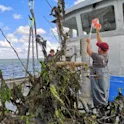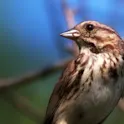
Featured news
08 Sep 2023
The climate crisis could reshape Italian mountain forests forever
by Angharad Brewer Gillham, Frontiers science writer Image/Shutterstock. With the changes in conditions caused by the climate crisis, the forests of the Italian Alps and Apennines are set to alter. Many species, including keystone species, will have smaller ranges to grow in. Some others may expand their ranges, possibly helping to maintain forests in the years to come. Scientists now warn that conserving our forests depends on detailed biodiversity modelling. As a result of the climate crisis, future forests may become unrecognizable. Trees that currently make up European woods may no longer be seen — or they may have moved several hundred meters uphill. Scientists writing in Frontiers in Forests and Global Change have mapped the forests of five vulnerable mountain areas in Italy and modelled the future of these fragile ecosystems. “If I imagine my daughter walking with me as an old man, in our mountain forests, I can imagine that we can see the initial stage of a profound change of species,” said Dr Sergio Noce of the Euro-Mediterranean Center on Climate Change Foundation (CMCC). “Like any natural process, time is needed, and forests have times that are totally different from us.” Seeing the wood for the trees […]













